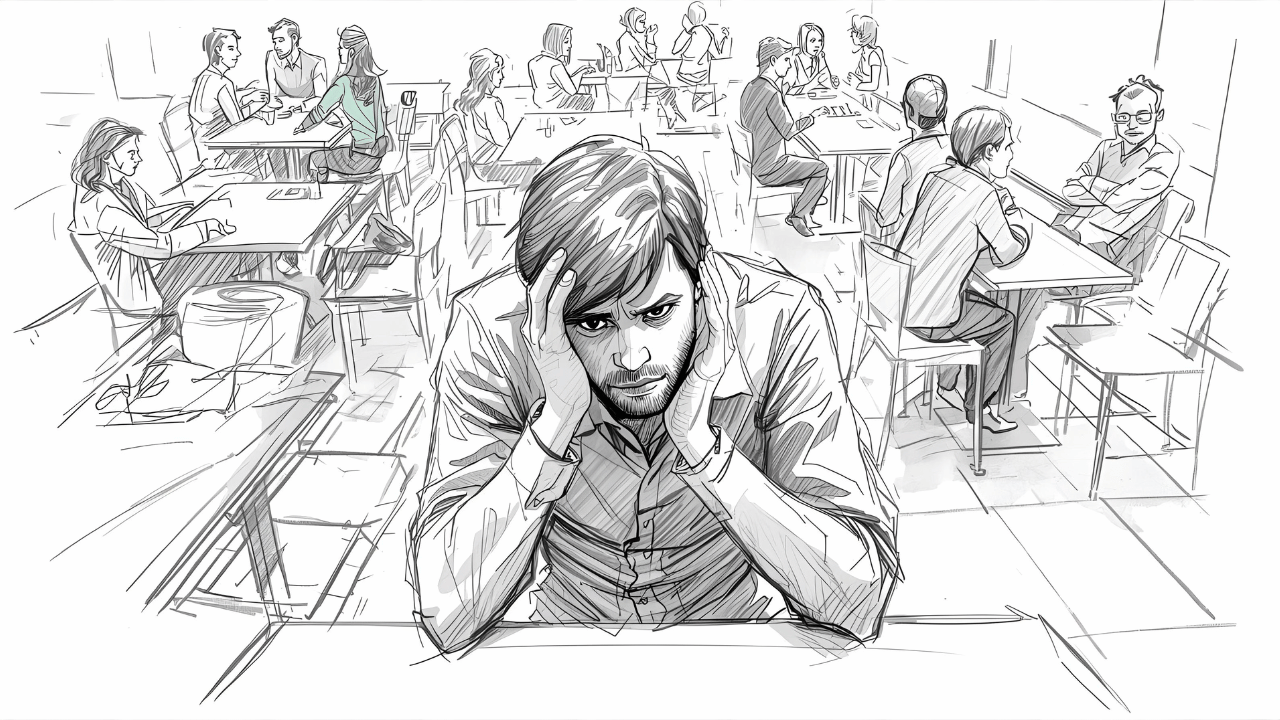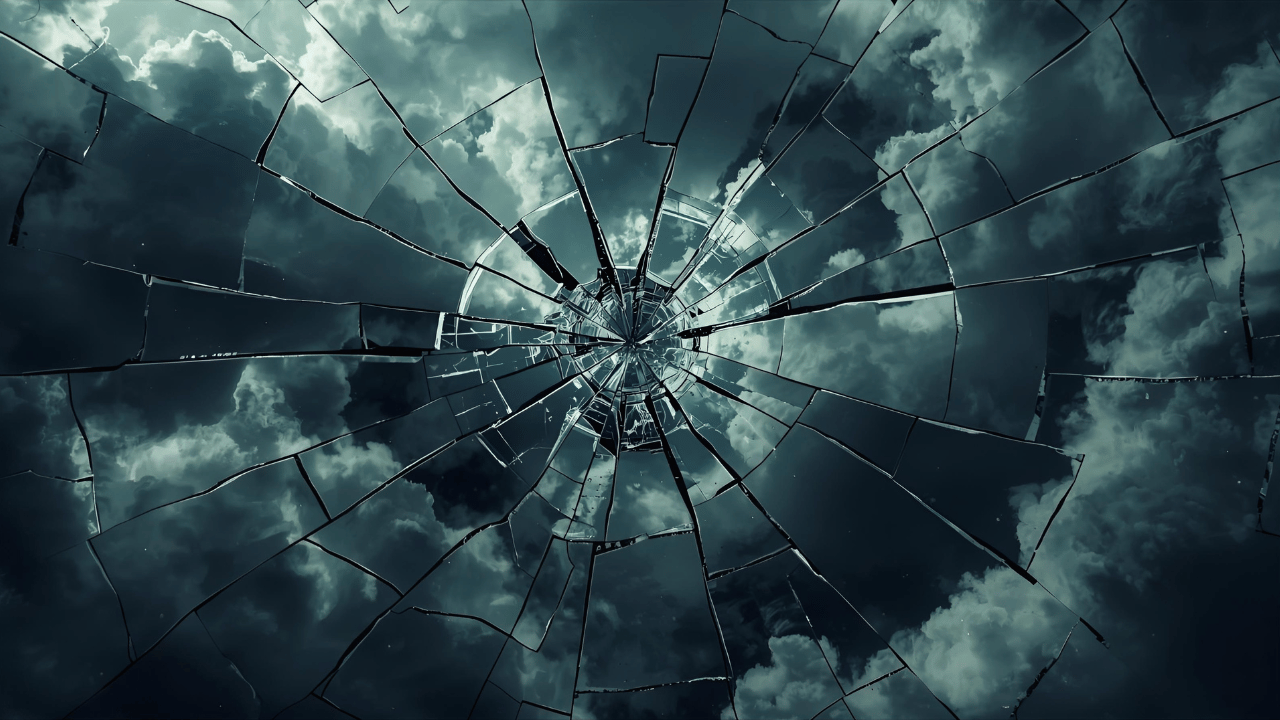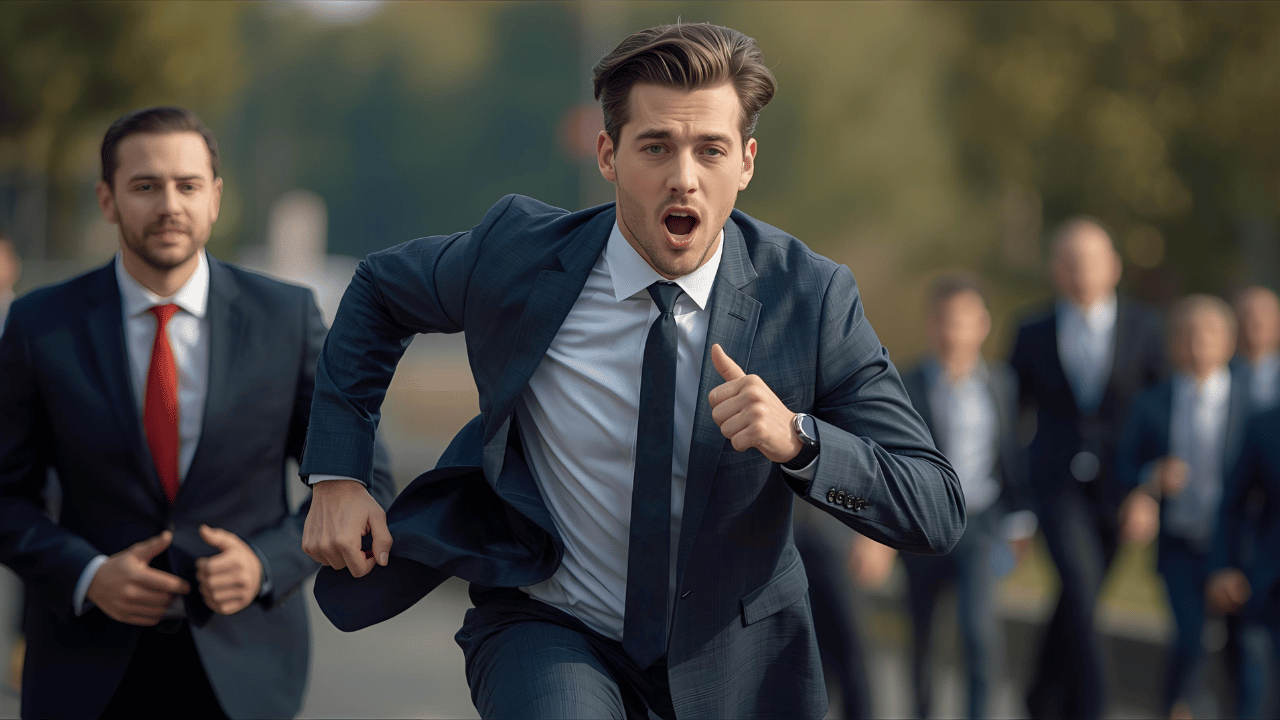Interview Outfits for Men [What Impresses Hiring Managers]
People make snap judgments all the time based on how we look and dress. Interviews are no exception. I’ve even had hiring managers talk about things like professionalism and attention to detail based on how someone dressed.
I hate that this happens. I’d rather everyone dress in their unique style and we all be judged on our merits, not our looks, but that’s not the world we live in. And one of the most common questions I get as a recruiter is, what should I wear to the interview?
I’ve even stressed about it in the past. I don’t want to overdress. I don’t want to come across as underdressed either. This article is meant to serve as a general guide for men’s interview attire and inspire some ideas for you.
Interview Dress Codes
First, let’s group dress codes into three categories for simplicity and discussion. There’s casual, business casual, and business formal. Let’s talk about what each looks like.
Solid Polo Shirt with Light Chinos Interview Outfit by Rye51
Casual Dress Code
Casual dress can include anything from jeans and a T-shirt to chinos and a button-down. When we talk about casual dress in an interview setting, it’s usually on the more refined end of the spectrum. If someone tells you that their dress code is casual, always err on the side of more dressed up.
Dressing casually for an interview is all about finding that balance between comfort and professionalism. You want to look relaxed, but intentional with what you choose to wear.
If you’re dressing casually, I would recommend either a solid polo shirt or a tailored button-down shirt with dark-wash jeans or light chinos. Add details like a belt or watch and some monk strap shoes to add some sophistication and dress it up a little more.
Make sure your shirt is clean, well-fitted, tailored, and doesn’t show signs of wear and tear. Also, stick to minimal patterns or subtle textures.
Business Casual Dress Code
I like to say if IBM and Apple had a baby, it would be business casual. This is the bridge between formal and casual. It’s not as stuffy and uptight as formal dress, but it’s also not casual either.
This is also the most common interview attire today. It’s a polished and professional look but without the suit and tie. It allows you to express your style through some textures, colors, and accessories.
A lot of people have trouble with this because done incorrectly, you can look like you’re going to a high school semi-formal (and that’s not the look you want).
Examples of business casual dress would include pleated pants or chinos worn with a dress shirt and a well-fitted sweater. You could wear loafers or dress shoes with it to dress it up.
Your dress shirt could have a small pattern to show some character but keep the patterns and the colors subdued. Shirts should also be well-fitted and have high-quality fabric.
Another example could be a pair of dark denim jeans with an oxford shirt layered with a cashmere sweater and some suede loafers.
You can add subtle touches like cufflinks if you wear a blazer or add a tie if you want to dress it up more. If your interview outfit feels too casual, adding a blazer will fix it.
Make sure your shirt is pressed with crisp lines and your shoes are polished the night before.
Business Formal Dress Code
Business formal is often found in the most traditional and conservative work environments. This will almost always be your interview attire for job interviews in finance law, and upper management.
It’s the highest level of professionalism, carries executive presence, and makes a strong authoritative impression for high-stakes meetings - like executive interviews.
For business formal interviews, you’ll wear a tailored suit, dress shirt, formal shoes, and most likely, a tie. You can even add a pocket square for some personal style.
I would stick to dark or natural tones such as navy or dark gray. Darker tones reflect seriousness and sophistication. I tend to avoid black. The only time I wear a black suit is either at a funeral or a black-tie event. And an interview is neither of those.
Fit is important, do not wear an off-the-rack suit. You want crisp, clean lines and it is fitted to your body contour (yes, men have body contour).
A good example of this is a well-fitted two-piece suit in navy or charcoal gray, a white dress shirt, a silk tie in a subdued color or pattern with leather oxford shoes, a matching belt, and some accessories like cufflinks or a tie clip.
If you want a high-quality silk tie that you’ll be able to use over and over again, my favorite place to shop is The Dark Knot. Check them out.
How to Determine What to Wear to an Interview
I’ll give you some general advice about interview outfits, but you should also think about the following:
Check to see how people present themselves on the company’s website and LinkedIn. Those are clues about the dress code.
If there is a recruiter involved and you’re unsure, ask about the company’s dress code and interview attire so that you are not over or under-dressed. You could say something like, “I typically wear a suit to interviews, but it looks like the dress code is more business casual by looking at their website. Do you think a suit is too much?”
If it’s a high-stakes executive interview, steer toward business formal.
Always err on the side of overdressing. There are usually fewer negative ramifications for doing so compared to underdressing.
Consider who you will be meeting with. If it’s a corporate executive, you should probably wear a suit. If it’s a Plant Controller, business casual is probably more appropriate. A front line manager at a manufacturing plant will more likely be wearing a polo, not a suit.
Mind the industry. Industries like law, finance, government, and education are almost always dressed in business formal.
What Colors Should You Wear to an Interview
I said this earlier, but I’ll repeat it. I’d avoid black suits and shirts. Your best bet for suits is charcoal gray or navy. You can wear blues, grays, olive greens, and even white shirts. Those are usually good choices for most people.
I would also stay away from stripes, loud colors, and tiny patterns as they can be distracting. You want all the attention on your words, not what you’re wearing.
Is It Ok to Have One Suit
If you need a suit for work and interviews, you ideally want at least two. But if you’re on a budget, you can make one work. Suits aren’t cheap, so I understand the hesitation in buying them for an interview.
If you only have one suit, you can mix it up by using different shirt colors and tie patterns. This is especially helpful if you have multiple interviews with the same company. This will help you look like you have a unique outfit each time.
So, yes, you can pull it off with one suit if you’re on a budget. And remember, not every job interview requires a suit either.
How Far Down Should a Tie Go
For those of us who didn’t grow up with a dad who wore a shirt and tie or a mentor to teach us, there is a right way to wear a tie. Once tied, the tie should end in the middle of your belt buckle. This might take a couple of tries to get it right, especially if you don’t tie ties often. Give yourself some time to learn.
What Buttons Should You Fasten on a Suit
If your suit has one button, button it. If it has two buttons, button the top only. If it has three buttons, button the middle only.
If you’re wearing a vest under a suit jacket, fasten all the buttons except the bottom one.
Keep your suit buttoned when standing and unbutton it when sitting.
Should I Wear Undershirts
Yes, wear one. It will help smooth body contours and keep your shirt in place. A good undershirt can also help absorb perspiration during those stressful interview moments. Dryco shirts
If you choose to wear a shirt with the top button unbuttoned, wear a v-neck undershirt; otherwise, wear a crew cut so the color is more uniform.
Proper Pant Length
Your pants should be tailored. You don’t want them too short and they shouldn’t bunch up at the bottom either. I have heard managers share negative impressions because pants are too baggy and too long.
Shoes
Shoes can really make or break an interview outfit for men. The right pair of shoes can give your casual or business casual the right amount of professionalism.
Avoid sneakers. Try a pair of laced dress shoes, loafers, or even a monk strap shoe.
My personal favorite shoes are from Chamaripa. They make “elevator shoes” which make you look taller. Never hurts to add some height - unless you’re already 7 ft tall.
Socks
Finally, an area where you can have a bit more fun. I’ve even been in interviews where socks are a conversation starter.
If you want to play it conservatively, choose a solid and light color that matches the color of your pants. Otherwise, take some liberty with a patterned sock.
Whatever sock you choose, make sure the elastic holds up. Your sock should stretch and hold up to your mid-calf.
What to Never Wear to an Interview
I’ve sat through thousands of debriefs with hiring managers over the past 10 years. Here are some things you should never wear.
Distracting Colors
Loud Patterns
Hoodies
Hats
How to Show Individuality and Maintain Professionalism
I’d like to think you won’t be judged on how well you can balance these two things, let alone how you dress at all, but the brutal truth is, you will be (to some extent).
I think the key to balancing individuality and professionalism is in selecting accessories, colors, and patterns. You don’t want to distract from presenting yourself as a competent professional, but a unique tie, a subtle piece of jewelry, or unique socks can show your personal style.
Choose a shirt that compliments your skin tone and a suit with a contemporary cut. From there, layer in a few unique pieces.
Dressing for Video Interviews
Video interviews can present some unique challenges that you don’t face when interviewing in person. Avoid bright colors and patterns because they don’t show well on camera. Small patterns are especially distracting on video so avoid herringbone or small check patterns and the like.
If you wear a tie, I would recommend a solid color. If you wear glasses, check your lighting to reduce glare from your lenses before you go on camera.
When Should You Find Your Interview Attire
DO NOT wait until the day before your interview to figure out what you will wear.
If you need a suit for an interview tomorrow, you’re too late. There’s no way you will have time to find one, buy it, and have it fitted for the next day. And buying an off-the-rack suit doesn’t look good for high-stakes interviews. At that point, you’d be better off showing up without a suit.
And have you tried shopping for anything in-store these days? Most of the time they won’t have your size or color in stock. Plan ahead and have a couple of interview outfits ready before you are invited for an interview.
Where Can I Shop For Interview Outfits
There are a lot of options to shop for men’s interview attire these days, but here are some of my favorite places. I love supporting unique brands and small businesses. Here are a few you can check out.
Chamaripa
I love these guy’s “Elevator Shoes” which make you look taller. These shoes feel comfortable which is a huge plus in my book. Most dress shoes I’ve purchased in the past sacrifice comfort for the look. For a limited time, they’ve offered our readers a 20% discount if you use the link above.
The Dark Knot
This is my favorite tie store. In fact, I never go to the store anymore to buy my ties. They sell the best silk ties. I also reached out to them and they shared a discount code SHARELUXURY with me for our readers which will give you 25% off the luxury line of ties.
Stately
If you want some really cool business casual outfits and you don’t want to style yourself, Stately is a really cool subscription box with some of the most modern styles I’ve seen. They’ve generously shared a code with me so you can get some free accessories with your purchase. Just use code ACC200 and they’ll seriously give you around $200 in free accessories with your purchase.
Cole Sperry has been a recruiter and resume writer since 2015, working with tens of thousands of job seekers, and hundreds of employers. Today Cole runs a boutique advisory firm consulting with dozens of recruiting firms and is the Managing Editor at OptimCareers.com.
















The pattern is as predictable as champagne on New Year's Eve, and often about as short-lived.